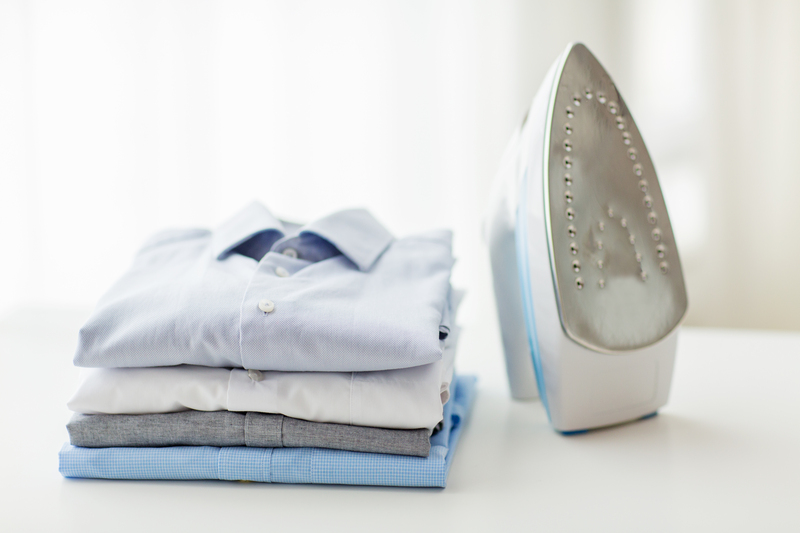Eliminating Burnt Stovetop Debris
Posted on 04/04/2025
A spotless stovetop not only looks great but also ensures the longevity of your appliance. However, burnt stovetop debris can be a stubborn and unsightly issue. In this article, we'll delve into various methods and tips to help you eliminate burnt stovetop debris effectively, offer practical tips, discuss the pros and cons of each method, and provide actionable takeaways for maintaining a pristine stovetop.
Understanding the Causes of Burnt Stovetop Debris
Before tackling the cleaning process, it's essential to understand the causes of burnt stovetop debris. Common culprits include:
1. Spills and Overflows: Liquids such as soups, sauces, and boiling water can easily overflow and create burnt residue.
2. Grease and Oils: Frying or saut?ing can result in grease splatters that gradually burn onto the stovetop.
3. Food Particles: Small bits of food that fall while cooking can become charred and adhere to the surface.

Tools and Supplies You Will Need
To effectively remove burnt debris from your stovetop, gather the following tools and supplies:
- Baking soda
- White vinegar
- Dish soap
- Soft sponge or cloth
- Razor blade scraper (for glass stovetops)
- Plastic scraper (for other stovetops)
- Microfiber cloths
- Hydrogen peroxide (if needed)
- Magic Erasers
- Paper towels
Step-by-Step Cleaning Methods
1. Baking Soda and Vinegar Method
1. Prepare the Surface: Turn off the stove and allow it to cool completely. Remove any loose debris with a soft cloth or paper towels.
2. Create a Paste: Mix baking soda and water to form a thick paste.
3. Apply the Paste: Spread the paste generously over the burnt areas.
4. Add Vinegar: Spray or pour white vinegar over the paste. You will notice a foaming reaction.
5. Let It Sit: Allow the mixture to sit for 15-20 minutes to break down the burnt debris.
6. Scrub and Wipe: Use a soft sponge or cloth to scrub the surface gently. Wipe away the residue with a damp cloth.
2. Dish Soap and Hot Water Method
1. Prepare Soapy Water: Mix hot water with a few drops of dish soap in a bowl or sink.
2. Soak a Cloth: Dip a cloth in the soapy water and place it over the burnt area. Let it sit for 15-20 minutes to soften the debris.
3. Scrub: Use the cloth to scrub away the softened debris. Rinse the cloth frequently.
4. Rinse and Dry: Wipe the surface with a clean, damp cloth and dry it with a microfiber cloth.
3. Razor Blade Scraper Method (For Glass Stovetops)
1. Safety First: Ensure the stovetop is completely cool. Use a razor blade scraper at a shallow angle to avoid scratching the glass.
2. Scrape Gently: Carefully scrape away the burnt debris, applying even pressure.
3. Clean Residue: Wipe away the loosened debris with a damp cloth.
4. Final Touch: Use a glass stovetop cleaner to polish the surface.
Pros and Cons of Each Method
Baking Soda and Vinegar Method
Pros:
- Natural and eco-friendly
- Effective for most burnt debris
- Affordable household ingredients
Cons:
- May require multiple applications
- Can be messy
Dish Soap and Hot Water Method
Pros:
- Safe for all stovetop surfaces
- Readily available supplies
- Easy to apply
Cons:
- May not be as effective for heavy burnt debris
- Requires soaking time
Razor Blade Scraper Method (For Glass Stovetops)
Pros:
- Highly effective for glass stovetops
- Quick removal of tough debris
Cons:
- Risk of scratching the surface
- Not suitable for all stovetop types
Practical Tips for Stovetop Maintenance
1. Clean Spills Promptly: Wipe up spills as soon as they occur to prevent them from burning onto the surface.
2. Use Protective Covers: Consider using stovetop liners or covers to catch spills and debris.
3. Regular Cleaning: Incorporate stovetop cleaning into your routine to prevent buildup.
4. Avoid Abrasive Tools: Use gentle cleaning tools to prevent scratching.
5. Follow Manufacturer Guidelines: Refer to your stovetop's manual for specific cleaning instructions.

Takeaways
- Understanding the causes of burnt stovetop debris can help you prevent and address the issue more effectively.
- Choose the appropriate method for your stovetop type and the severity of the burnt debris.
- Regular maintenance and prompt cleaning can prevent the accumulation of stubborn debris.
Conclusion
Eliminating burnt stovetop debris doesn't have to be a daunting task. By using the right methods and tools, you can restore your stovetop to its pristine condition. Whether you opt for the natural baking soda and vinegar method, the simplicity of dish soap and hot water, or the precision of a razor blade scraper, each approach has its pros and cons. Remember to follow practical tips for regular stovetop maintenance to keep your kitchen looking spotless. With these strategies in hand, you'll enjoy a clean and efficient cooking space for years to come.




